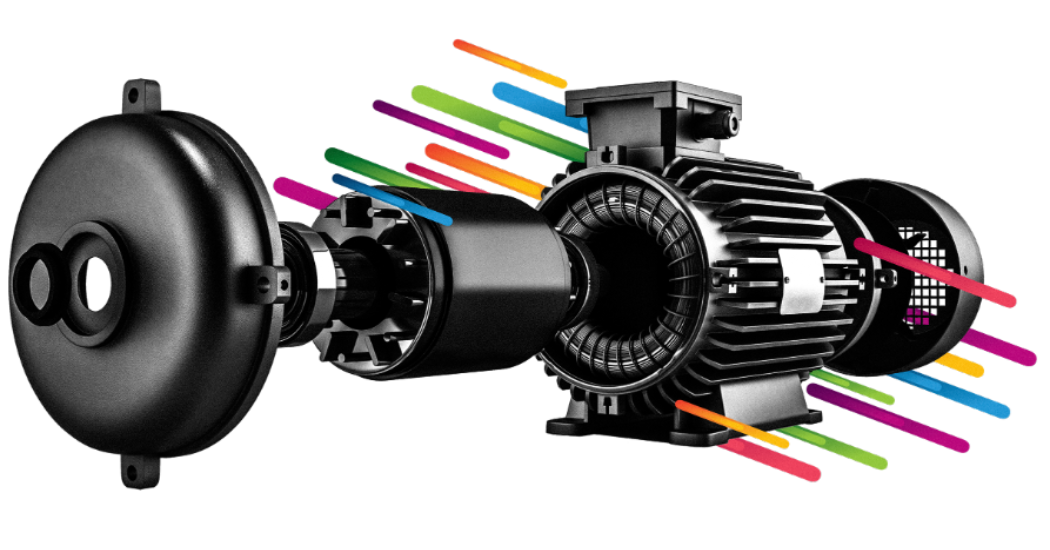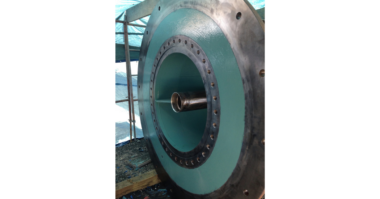Harnessing the power of connected information is changing the ways we think about business, production, and efficiency. Industries around the world are undergoing digital transformation. While this massive shift will mean different things to different sectors and people, it will impact nearly every aspect of our world, including any industry utilizing pumps and related equipment.
At its root, digital transformation is at the intersection of data, connectivity, insights, and people-these elements create opportunities for organizations to fundamentally change how they do business.
Though digital transformation can be challenging, more and more organizations are finding the path forward. At the heart of this transformation is data. This journey which starts with connectivity and data, leads through generation of insights which (when used properly) can create new revenue streams and efficiencies, and culminates with a full business model transformation – often through Equipment-as-a-Service (EaaS).
Equipment-as-a-Service has been around in one form or another for over five decades, but advancements in technologies, maturing industries, and available capital have injected it with new life.
Through an EaaS business model, customers are provided the machinery, equipment, or production systems and enabling technology and services in exchange for a fee. EaaS models are enabled by financing, but at their core they are service contracts. This distinction sets them apart from more traditional finance offerings such as loans and leases.
The provider of an EaaS model typically has the responsibility for the maintenance, service, repairs, and replacement of the equipment utilized. In the spirit of providing a service, agreements to the users of EaaS models typically receive some form of guaranteed outcome –be it equipment uptime or availability, guarantee of outcome of production, etc. Essential data points and critical equipment information are collected throughout the process. This model provides a greater degree of predictability to the provider (who is typically an OEM or MRO) in the form of predictable, recurring revenue streams. Additionally, due to the set up and technology involved in these models, providers gain greater insights into how customers are using their equipment and services. These insights can be used to make improvements to equipment features, capacity, and overall operations which in turn leads to greater stickiness.
These models lower risk and enable a high degree of flexibility for customers by shifting (often prohibitive) expenditure (CAPEX) to operating expenses (OPEX) in a way that matches the company’s cost structure to their business cycle. Designed correctly, EaaS models have been shown to improve overall operations, revenues and resiliency for all parties.
EaaS Builds Resiliency
After reflecting back on the multitude “once in a century” events that have happened over the last few years, there should be no surprise that resiliency has become top of mind for companies and their leadership teams. Digital transformation leading to an EaaS model can support businesses in their overarching objective to create resiliency. In the next section, we will explore a few of the contributing factors for both providers and users of EaaS models.
For providers of EaaS models (OEMs, MROs, etc.):
- Predictable Revenue Streams. This is a no-brainer. The long-term, predictable, and recurring revenue streams offered by EaaS offer greater resiliency to any provider.
- Product Improvements. Connectivity and intelligence increase resiliency. Gathering accurate, real-time data from machinery allows for opportunities to update or create better machinery.
- Greater Share of Wallet. EaaS offerings are bundled, and it often does not make sense to unbundle them as it diminishes the value proposition to the customer. This creates a dynamic where providers can achieve a 100% attach rate for critical, value-adding aftermarket services.
- Greater Visibility and Fleet Management. Constant and continual monitoring of equipment is possible through intelligence and connectivity. Remote visibility offers insight into data outputs, what’s happening with the equipment, and how it’s being operated. All this and more helps improve equipment lifetime.
For users of EaaS models (equipment operators):
- Flexible Cost Structure. EaaS enables equipment operators to better match their fixed costs with demand which enables much greater resilience and the flexibility to adjust costs with the business cycle.
- Maintenance Repair Costs. Keep them low when pairing EaaS with a strong maintenance program (e.g., predictive maintenance or PdM). Resiliency improves when maintenance and repairs are predictable, proactive, and performed at the right cadence.
- Managed Risks Exposure. EaaS can help to manage the risks associated with owning and operating machinery. When set up with insurance or warranties as part of the bundle, these risks can even become managed and mitigated.
- Improved Utilization. What’s sitting idle? There is a revenue stream waiting to be discovered. Can an idle piece of machinery be utilized elsewhere?
- Reduced Spare Parts Inventory. The comfort of knowing that equipment availability will become managed enables providers to reduce the amount of inventory they hold.
Strategic Subscription Models
Those who are going on the EaaS journey know the importance and the complexity of finding and implementing the right pricing model for the offering. All EaaS models are linked in some way to the demand seen by the customer. However, there are several different ways that such models can be priced. Consider the following examples:
- Pay-per-hour: user pays only when the machine or production system is being operated. This is the model which is closest in principle to a loan or lease.
- Pay-per-part: user pays based on the parts that the machine is producing (consider, for example, the output of a CNC machine). Pricing also must be configured to match the part that’s being produced which can create complexity.
- Outcome-based: the customer and the provider of the model mutually agree on what success looks like and the customer pays the provider a portion of the outcomes realized.
Getting Started with EaaS
Implementing an EaaS strategy will inevitably affect every single aspect of a business, whether providing the offering or using it. Here are several strategies to think about:
Understand your customers.
Equipment-as-a-Service offerings only work when there’s a simple, clear value proposition to customers. Any decision to offer or use an EaaS offering should always be made in the context of the value the offering provides back to the business.
Build internal alignment starting top-down.
Position digital transformation and EaaS as part of the organization’s long-term agenda. Help employees understand both ‘what’ the company is trying to accomplish and ‘why.’ As this transformation will impact every part of the business, it’s important to have buy-in from senior leaders and the Board. That commitment needs to stay at a high-level through every stage of the program.
Remember big decisions have risks.
Risk management is better than risk aversion. As with any new business model, EaaS reveals different types of risks while mitigating others that should be evaluated holistically and addressed.
Define success early and maintain flexibility.
Though these models have been in the market for several decades, we’re still in the early stages of broader adoption in the industrial market. For providers, pursuing EaaS is typically a multiyear endeavor during which it’s important to remain grounded in a well-understood definition for success. Ensuring flexibility in decisioning, customer contracts, and other elements of execution will ensure businesses can correct course while on the journey.
Make a big impact using small moves.
Meaningful change takes organization and time. Strategize in terms of entire change—this is no time for start-and-stop mentalities. Remember that this is a digital transformation journey that happens over time. We also recommend designing the journey in a way that delivers quick wins and a favorable return on investment to sustain positive momentum and ensure better results.
Find the right partner.
While the EaaS journey can be rewarding, it’s also fraught with challenges. It’s important to identify the right partner who can complement your business’ capabilities and assist in managing through the complexity. Given the early nature of the market, it’s unlikely that businesses will find a one-to-one match or playbook within their industry – but the right partner will bring in prior experience and adjacent markets to improve the likelihood of success.
 About the Author
About the Author
Krishna Yarramasu is the Vice President of Strategy and Transformation at relayr, an Industrial Internet of Things company focused on solutions for risk-free digital transformations.





Comments